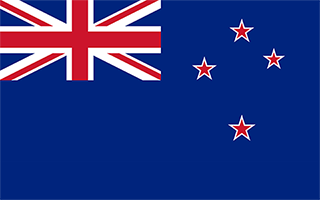Facts and Data
Webpages:
Official Unesco Page
View photos from OUR PLACE the World Heritage collection
World Heritage in New Zealand
Protectedplanet.net
Basis Data:
Unesco World heritage since: 1998
Size of heritage: 76,458 ha
Coordinates:
Longitude: 166,104°
Latitude: -49,250°
Summary
The New Zealand Sub-Antarctic Islands consist of five island groups (the Snares, Bounty Islands, Antipodes Islands, Auckland Islands and Campbell Island) in the Southern Ocean south-east of New Zealand. The islands, lying between the Antarctic and Subtropical Convergences and the seas, have a high level of productivity, biodiversity, wildlife population densities and endemism among birds, plants and invertebrates. They are particularly notable for the large number and diversity of pelagic seabirds and penguins that nest there. There are 126 bird species in total, including 40 seabirds of which five breed nowhere else in the world.
Location on Map
Show bigger map on Openstreetmap
New Zealand Sub-Antarctic Islands: A Pristine Wilderness
The New Zealand Sub-Antarctic Islands, located in the New Zealand Subantarctic Zone, are a group of remote and isolated islands that have been designated as a UNESCO World Heritage site. This pristine wilderness is renowned for its unique biodiversity, stunning landscapes, and rich cultural history.
History
The islands have a fascinating history that dates back to the 18th century when they were first discovered by European explorers. Captain James Cook was the first to sight these islands in 1773, and they were subsequently visited by sealers and whalers in the early 19th century. These early visitors exploited the islands' abundant wildlife, leading to the near extinction of several species.
In the late 19th and early 20th centuries, scientific expeditions began to explore the islands, contributing to our understanding of the unique ecosystems and wildlife that inhabit this remote region. The islands also played a significant role in the development of modern conservation efforts, with the establishment of wildlife sanctuaries and the eradication of introduced species.
Current State
Today, the New Zealand Sub-Antarctic Islands are recognized as one of the most important and well-preserved natural areas in the world. The UNESCO World Heritage site encompasses five main islands: Auckland, Campbell, Antipodes, Snares, and Bounty Islands, as well as numerous smaller islets and rocks.
The islands are home to a remarkable array of wildlife, including several endemic and endangered species. The rich marine environment surrounding the islands supports a diverse range of marine mammals, such as fur seals, sea lions, and several species of whales. The islands also provide crucial breeding grounds for seabirds, with millions of birds nesting on the cliffs and tussock-covered slopes.
The New Zealand Sub-Antarctic Islands are renowned for their unique flora, with many species found nowhere else in the world. The islands are covered in lush forests, dominated by megaherbs, tussock grasses, and ferns. These plants have adapted to the harsh subantarctic climate, creating a stunning and otherworldly landscape.
Efforts to protect and conserve the islands' fragile ecosystems are ongoing. The New Zealand government has implemented strict regulations to prevent the introduction of non-native species and to manage tourism activities in the area. The Department of Conservation plays a crucial role in monitoring and preserving the islands' biodiversity, working closely with international partners and local communities.
Visiting the New Zealand Sub-Antarctic Islands is a once-in-a-lifetime experience. However, access to the islands is strictly controlled to minimize human impact. Only a limited number of scientific researchers and approved tour operators are allowed to visit, ensuring the preservation of this unique and fragile environment.
The New Zealand Sub-Antarctic Islands are a testament to the power of conservation efforts and the importance of protecting our natural heritage. As a UNESCO World Heritage site, they serve as a reminder of the incredible biodiversity and ecological significance of these remote and pristine islands.
